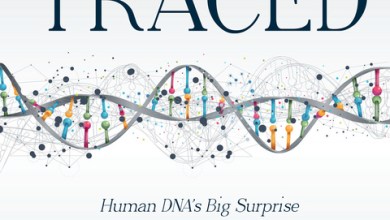The Theory of Evolution Judged by Reason and Faith
Cardinal Ernesto Ruffini, translated by Rev. F. O'Hanlon
Preserving Christian Publications, 2008
205 pages
Available from Kolbe Center ($19 plus S&H).
This book was originally printed in 1959, shortly after Pope Pius XII wrote Humani Generis (Concerning some false opinions threatening to undermine the foundations of Catholic Doctrine) and shortly before Whitcomb and Morris wrote The Genesis Flood. It was an attempt to judge the theory of Evolution based on the known science of that time and from the perspective of the Catholic Faith.
Various theories of evolution are examined ranging from Materialistic Evolution, where the whole universe is the result of eternal matter and in a state of perpetual change, to Restricted Evolution, where evolution has only taken place within the limits of species. It is found that there is much evidence in favor of changes occurring within the limits of species, but no evidence of one type of animal evolving into another type or of any spontaneous generation of organisms.
The Genesis account is also examined in some detail and several interpretations are scrutinized. The first is the strict Historical-Literal system in which everything is taken as literal history. Next is a more broad Historical-Literal system where the "days" are taken to mean periods and not 24-hour days. Next are the Allegorical and Mythological systems in which everything is reduced to an allegory or myth.
Ruffini accepts as fact the geological eras as described by modern science. This automatically implies long ages which are in conflict with the literal six-day interpretation of Genesis. He is also aware of the vast distances in space which seem to require millions or billions of years for light to traverse, further arguing against the literal six days. So he adopts the more broad Historical-Literal interpretation of Genesis.
Beginning in the 1980's, the experimental work of Guy Berthault has shown that the layers of rock strata making up the geologic column could have been formed in a relatively short time. In 1994 Russell Humphreys published a book, Starlight and Time, which gives a scientifically-based explanation for light travelling vast distances in a short amount of time as experienced on earth. If Ruffini could have known about this information he doubtless would have adopted the more literal interpretation of Genesis.
The second of the two parts of the book deals with the origin of man. Ruffini reviews the various hominoid fossil finds up to that time and argues that they are either apes or men. He also reviews the teachings of the Catholic Church on the matter. It is considered a matter of faith that the body of Eve was taken from the body of Adam in some manner. The Hebrew name for woman, ishah, signifies that she was taken from the man, ish.
Genesis describes God making the body of Adam from the earth. The name Adam, indicates that he was taken from the earth, adamah. He is also told by God that he will return to the earth, just as he has been taken from it. Some scholars have attempted to interpret the earth from which Adam was taken as pre-existing matter or a life form. This idea is shown to be scripturally and logically flawed. Although Pius XII allowed for the discussion of the origin of Adam's body, he in no way admitted to the acceptance of evolution as fact.
Some evolutionists are fond of quoting Augustine in support of their theories, since he did not ascribe to a literal six-day creation, but the creation of everything at once in a seminal state. But it is shown that Augustine in no way supports the idea of successive evolution of everything from one original organism.
The Theory of Evolution Judged by Reason and Faith is a critical examination of evolution from the view of science and the Faith. It is shown that modern-day evolutionary ideas are scientifically and logically flawed. It also has an excellent argument in favor of the body of Adam being taken directly from the earth. If Ruffini had access to the information that we now have on rapid formation of strata and the possibility of light traveling vast distances in a short time as experienced on earth, he doubtless would have taken a more literal interpretation of Genesis.
Reviewed by Eric Bermingham
April, 2009






